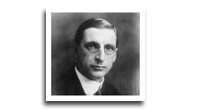
Chapter 8 (page 331)
Write an account of the career of Seán Lemass.
Sean Lemass was born in Dublin and fought in the 1916 Rising and the War of Independence. When De Valera founded Fianna Fail in 1926 he played a vital role in organising the new party. He was Minister for Industry and Commerce in the Fianna Fail government in the 1930s. He was Minister for Supplies during World War II (The Emergency). [This is all background material – maximum of 2 marks.]
In 1959 he succeeded Eamon de Valera as Taoiseach. He realised that the economic policy of protectionism had not worked. With the help of T.K. Whitaker he drew up a plan to deal with the political crisis. It was called the First Programme for Economic Expansion. Its main points were:
To attract foreign industry to Ireland by:-
a). Offering them grants to set up here
b). No tax on profits
c). Building industrial estates to provide facilities for these industries.
These proposals were very successful. In the 1960s many firms came from the US, Britain and Japan. As a result employment increased and emigration decreased. The population rose for the first time since the Famine.
In 1965 he signed a Free trade agreement with Britain. It removed all tariffs (taxes) on Irish industrial exports. The Irish government gradually reduced tariffs on British imports.
Between 1960 and 1968 over 600 firms set up in the Republic of Ireland.
An educated workforce was needed for further industrial development. As a result Lemass supported the Minister of Education when he announced that there would be free secondary education for all children. There was a huge increase in the number of pupils attending secondary schools.
Lemass improved relations with Northern Ireland. He visited Belfast to meet the prime minister of Northern Ireland, Terence O’Neill. Cooperation was encouraged in areas such as tourism and agriculture. O’Neill later visited Lemass in Dublin.
He retired in 1966 after helping to bring about major changes in the Irish economy and in Irish society.

